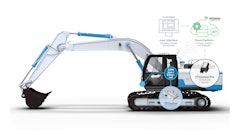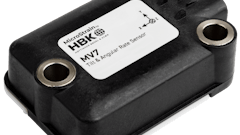Wireless Advanced Vehicle Electrification (WAVE) announced on October 29 it would commence commercial deployment of a 50 kW wirelessly powered electric bus serving a light rail “TRAX” station in Salt Lake City. WAVE’s state-of-the-art Wireless Power Transfer (WPT) technology used in the project is the most powerful and efficient single pad wireless charging system ever deployed by a U.S. company for public transit.
The Utah Transit Authority (UTA) partnered with WAVE to complete the project after receiving a $2,692,000 Transit Investments for Greenhouse Gas and Energy Reduction (TIGGER) Grant from the Federal Transit Administration (FTA). WAVE and the University of Utah purchased a Zero Emission Propulsion System (ZEPS) bus from Complete Coach Works with non-grant funding, in addition to WAVE further funding development of the technology and execution of the project.
“This launch is a key moment in our short history, marking a culmination of years of hard work to develop, finance and build a 50 kW wireless charging system,” says Michael Masquelier, WAVE Chief Executive Officer and Chief Technology Officer. “We’re excited to officially demonstrate how this technology has set a new benchmark that will change the transit industry in America and around the world.”
WAVE-powered buses are charged wirelessly from a charging pad embedded in the roadbed and another identical pad mounted underneath the bus. WAVE’s WPT is created through magnetic fields that move power from underneath the roadway to the vehicle, without wires or cables, while the vehicle is stationary and loading/off-loading passengers. Charging vehicles wirelessly reduces the required on-board battery size, increases battery life by avoiding deep cycling and extends vehicle range.
Traditionally, the transit industry has been hesitant to adopt electric buses on a broad scale – even though electric buses are cheaper to operate and maintain – due to valid challenges about the range and cost of electric buses created by the inherent limitations of current battery technology. Batteries are expensive, heavy and large; however the WAVE WPT technology overcomes these challenges by reducing the size of the batteries needed to operate an electric bus. WAVE does this by using advances in power electronics – the same advances that give us today’s smartphones and laptops – to provide a cheaper and more effective way of powering electric buses.
The WAVE WPT technology facilitates the integration of electric buses into transit fleets. “Without wireless charging developers like WAVE, transit agencies and fleet owners would be stuck with existing battery technology, which prevents the wide scale adoption of battery powered, all-electric vehicles,” says Masquelier.
Additionally, improving Utah’s air quality continues to be a priority initiative for both residents and statewide legislators alike. “This technology was supported from the beginning by the State of Utah through the Utah Science Technology and Research (USTAR) initiative, and we are thrilled that a USTAR-supported company, with technology developed by Utah State University, is creating jobs in Utah that will improve the quality of life of transit users both in Utah and nationwide,” says Greg Bell, Chairman of the USTAR Governing Authority.
For UTA, the WAVE project represents its first experience with electric buses. “The potential of the WAVE technology is exciting,” says UTA President and CEO Michael Allegra. “We are always looking at ways to make our system more sustainable and better for the environment. WAVE is leading the way in this new technology.”
“Utah has struggled with air quality for a long time, and we are happy to contribute to implementing a long-term solution that can be applied both here and in other states,” says Masquelier.
For the University of Utah, the WAVE project demonstrates a commitment to sustainability on campus. “The University of Utah is committed to sustainability, and this electric shuttle not only helps the U work toward its sustainability goals, but also serves to further the use of electric vehicles by mass transportation systems throughout the state and country,” says Alma Allred, Director of Commuter Services at the University. “As this technology is tested and refined in a real-world environment here at the U, it can develop into something that is both affordable and reliable and ready for use on a broader scale.”
“The commercial launch is a huge benchmark for us,” says Masquelier. “To be the first company to deploy this type of technology, and help improve Utah’s air quality is rewarding, and affirms we are headed in the right direction.”

















